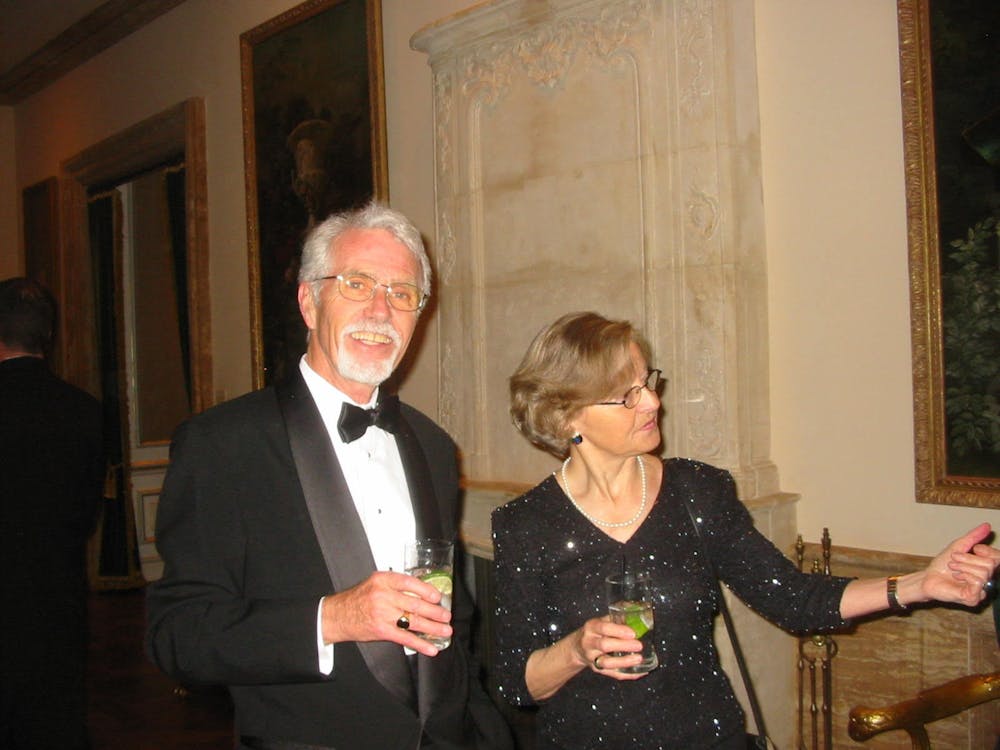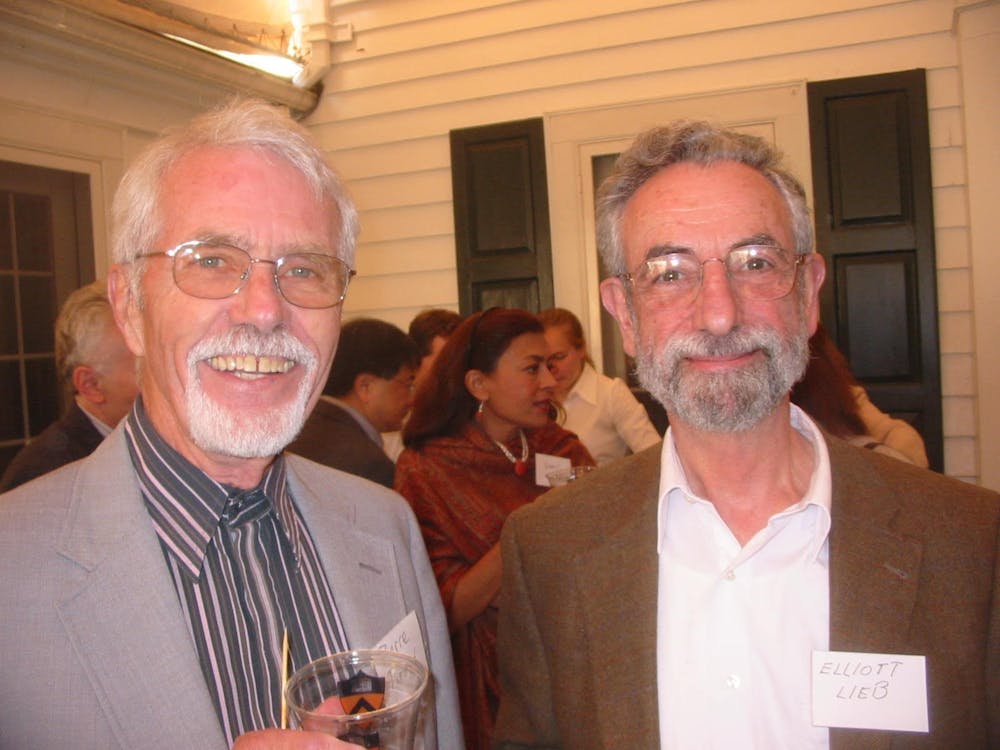Prominent experimental particle physicist and long-time University faculty member Pierre Adrien Piroué died on Feb. 12 at the age of 88.
Piroué, the Henry DeWolf Smyth Professor of Physics, Emeritus, spent over six decades as a member of the physics department at the University and played a key role in many crucial experimental breakthroughs of high-energy physics throughout his career as a research physicist. Piroué conducted experiments at Brookhaven National Laboratory, Berkeley Radiation Laboratory, Fermi National Laboratory, and the European Organization for Nuclear Research (CERN).
Piroué died at Princeton Medical Center after a brief illness on Wednesday, Feb. 12.
Piroué was born in La Chaux-de-Fonds, Switzerland, just south of the Swiss-French border, on Sept. 18, 1931. According to Professor of Physics, Emeritus Kirk T. McDonald, Piroué once said that his father had emigrated to Switzerland from neighboring France to escape the carnage of World War I and avoid becoming “cannon fodder.”
James S. McDonnell Distinguished University Professor of Physics Curtis G. Callan GS ‘64 recalled the influence of French culture on Piroué's personality.
"Although Pierre’s passport was Swiss, he was French in culture and way of looking at life and human relations," wrote Callan, "his lectures to elementary physics classes were peppered with Gallic aphorisms and witticisms that never failed to startle his Princeton student audience, hopefully sharpening their attention to the technical point being made."
After fulfilling his military service obligation and receiving undergraduate degrees in chemistry and physics from the University of Geneva, Piroué came to Princeton University for graduate studies in physics in 1956.
To his surprise, Piroué remained subject to the U.S. military draft despite already being married, according to the obituary published by the Department of Physics. To help him avoid the draft, the University arranged for Piroué to continue his graduate studies here but technically remain enrolled at the University of Geneva.

Piroué received his doctoral degree in physics from the University of Geneva in 1958 for the cosmic ray research he conducted under University physicist George T. Reynolds GS ’43, who was also responsible for recruiting numerous prominent physicists to the University, including Nobel laureates Riccardo Giacconi, James Cronin, and Val Fitch.
After receiving his doctorate, Piroué spent two years conducting research as a postdoctoral associate with Fitch, an acclaimed University physicist who received the 1980 Nobel Prize for his work in experimental particle physics.
In 1960, Piroué returned to Geneva to spend a year as a fellow at CERN, just six years after the founding of the organization.
Piroué would then return to the University to join the physics department as an instructor in 1961, and nine years later, he became a full professor.

Piroué soon became an expert in fast electronics and particle detectors, as well as a leader of the increasingly large teams of physicists working on the key experiments that would come to dominate the field.

Piroué, with his wife Marianne, at a physics department celebration for the awarding of the 2004 Nobel Prize in Physics to Frank Wilczek GS '75 and Thomas D. Jones Professor of Mathematical Physics, Emeritus, David Gross.
Photo Courtesy of Kirk T. McDonald
Daniel R. Marlow, experimental particle physicist and the Evans Crawford 1911 Professor of Physics, explained how Piroué’s research became broadly influential in the 1970s.
“The field moved towards electronic detectors based on ionizations or light signals, but all of that information had to be recorded in a computer, and sitting between those detectors and the computer was a lot of electronics,” explained Marlow. “That was [Piroué]’s specialty. He led a team that designed those electronics, and because we wanted to get a lot of data, these electronics had to be very fast.”
In sheer numbers, his career came a long way. For his first experiment, Piroué was effectively on his own. For his last, he worked with the Compact Muon Solenoid (CMS) experiment at the CERN Large Hadron Collider (LHC) and collaborated with more than 3,000 scientists.
Beginning in the 1990s, Piroué and his students began working at LHC on the world’s largest particle accelerator built primarily to prove or disprove the existence of the Higgs boson and the Higgs mechanism. The Higgs boson is a subatomic particle that gives mass to other elementary particles.
The CMS experiment and the ATLAS experiment together confirmed the existence of the Higgs boson in 2012.
Theoretical physicists Peter Higgs and François Englert, who independently discovered the mechanism behind the existence of the Higgs boson, shared the 2013 Nobel Prize in Physics, which also recognized the work of a thousand-strong army of physicists – including Piroué – that spanned over half of a century.
Theoretical particle physicist and Herman Feshbach Professor of Physics at Massachusetts Institute of Technology Frank Wilczek GS ’74 discussed the impact Piroué had on the Department of Physics.
“He’s such a fixture of Princeton – he’s just a part of the landscape,” remarked Wilczek. “He really gave the department an international flavor, too. Everything from his name, to his accent, to his participation in collaborations overseas really made the place feel really cosmopolitan.”
Piroué was a fellow of the American Association for the Advancement of Science (AAAS) and a fellow of the American Physical Society (APS). He was also a member of the Swiss Physical Society (SPS), as well as the European Physical Society (EPS).
Having played the piano since he was a boy, Piroué developed and taught a popular freshman seminar, FRS 110: Sound, Music … and Physics, after transferring to emeritus status in 2001.
In addition to his love of music, Piroué was a skilled tennis player and skier. He is remembered by friends for his presence at tennis courts at the University and his enthusiasm for skiing in the Swiss Alps.
Piroué is survived by his wife of 65 years, Marianne; his son, Olivier; his daughters-in-law, Teresa and Beverly; and his two grandchildren, Amanda and Andrew. He was predeceased by an older son, Nicolas.








